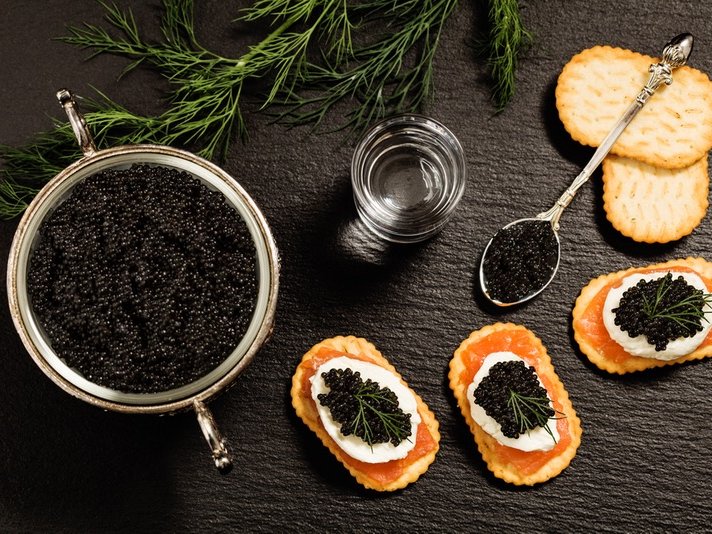For the sixth straight year, October is Dining Month on OnMilwaukee.com, presented by Concordia University. All month, we're stuffed with restaurant reviews, delectable features, chef profiles and unique articles on everything food, as well as the winners of our "Best of Dining 2012."
For more than 100 years, Milwaukee has been a frontrunner among cities with excellent German restaurants. Although in more recent years, two of Milwaukee's most esteemed German restaurants have made changes to accommodate younger and more health conscious diners, it's interesting to know where and how it all began.
In 1902 Charles Mader spent his life savings on a small building on Plankinton Avenue and named it "The Comfort." For 20 cents, a customer could eat a large dinner – and leave a tip. Large steins of "Cream City" beer were three cents or two for five cents, and if a customer spent five cents on beer, lunch was free.
A few years later, Mader moved the restaurant to its current location, 1041 N. Old World Third St., and soon after it became known as "Mader's."
Right before Prohibition struck in 1919, Mader hung a sign in the window of his German pub and eatery that read, "Prohibition is near at hand. Prepare for the worst. Stock up now! Today and tomorrow there's beer. Soon there'll be only the lake."
During Prohibition, Mader focused on perfecting his recipes for sauerbraten, wiener schnitzel and pork shank because he felt both inspired and challenged that his German dishes could not be complemented by a traditional stein of beer. When Prohibition finally ended at midnight in 1933, Mader's served the first legal stein of beer in the city and it was announced from the restaurant on Milwaukee's only radio station.
Ratzsch's Restaurant, 320 E. Mason St., is almost as old as Mader's, opening in 1904 as "Hermann's Cafe" in Downtown Milwaukee. Chef Otto Hermann's stepdaughter, Helen, moved to Milwaukee from Germany, married a man named Karl Ratzsch, and the couple took over the restaurant under the new name which remains the same today.
Ratzsch's was family owned until February 2003, when it was sold to a management team of people, all of whom are dedicated to upholding the family traditions, but with a few twists.
Both Mader's and Ratzsch's survived the Prohibition and the Depression. Both restaurants have a similar menu and upscale, German decor complete with lots of dark wood, display beer steins, stained glass and antiques. And in the past decade, both restaurants have made a few changes to continue to offer classic German dishes along with newer-school meals that are on the lighter side and might appeal to a younger or more health-conscious crowd.
Tom Andera, one of the managers at Ratzsch's, says he and his colleagues started offering a German fish fry, made with Weiss beer batter, when they took over the business which provided a more affordable, casual option to the Friday menu.
The new group, which also includes dining room manager Judy Hazard and executive chef John Poulos, decided to open Ratzsch's for lunch, and introduced lighter fare such as a grilled salmon Reuben, chicken sandwiches and a variety of salads. The mermaid salad is one of the most popular entrees, featuring sauteed shrimp, blueberries and strawberries.
"A lot of people come here who want traditional German food, but there is usually at least one in a group who would prefer something lighter," says Andera.
The sauerbraten, however, continues to be Ratzsch's top seller because of the world-recognized family recipe, but also because it's so labor intensive and people rarely have the time or desire to make it at home. The sauerbraten is marinated for a week in a wine / vinegar / spices / vegetable mix and then roasted.
The black forest schnitzel and deep fried pork shank are still very popular, as is the lighter broiled white fish.
"It's the most delicious food you've ever had, all homemade," says Andera. "Traditional family recipes from 1904."
As for drinks, Andera says Ratzsch's continues to serve many of the same cocktails, including those made with Dooley's, a German cream liqueur that's similar to Bailey's, and German beers like Roggenbier (a fairly dark beer made with rye) and Weiss (a wheat beer usually served in a tall glass with a lemon). He has noted an increase in Sprecher sales, reflecting the trend, perhaps, for consumers to buy local products.
Andera says the restaurant serves a younger crowd on the weekends, and continues to serve the business crowd during the week.
Both restaurants attract diners from Chicago. According to Andera, the Milwaukee German food offerings are much stronger than Chicago's and therefore a lot of people drive up for dinner or families stop off on their way to a Door County vacation in the summertime.
Ratzsch's has a children's menu as well as an early-dining menu offering discounted entree prices between 4 and 6 p.m., Monday through Friday.
Mary Niland has been the restaurant manager at Mader's for eight years, and she says the restaurant created a menu to suit both the needs of the traditional German food lover as well as those guests who want to eat lighter. The lighter menu offerings include a heart-healthy sauerbraten and an unbreaded chicken schnitzel.
"We also offer a range of light sandwiches on our lunch menu and our bar menu," says Niland. "As well as fish and vegetarian entrees. Our executive chefs will custom make any menu item to accommodate all food allergies."
Niland says the most popular dishes on the menu are a combination of newer and classic items, including pork shank, almond-crusted trout, Rouladen, wiener schnitzel, portabella napoleon, sauerbraten, chicken schnitzel, the giant pretzel and the German nachos.
"We also have a great wine, beer and specialty drink selection and our bar is really a fun meeting place for people of all ages," says Niland.
Interestingly, the Old German Beer Hall, 1009 N. Old World Third St., opened more than 100 years after Mader's and Ratzsch's, and yet the menu does not accommodate lighter appetites. Instead, the menu is chock full of traditional German favorites including numerous "wurst options" like bratwurst, knackwurst, currywurst and a wurst platter.
"We have done absolutely nothing (to accommodate lighter menu items). We are a traditional German restaurant – there's no 'fusion' anything here," says kitchen manager Tony Meyer.
Molly Snyder started writing and publishing her work at the age 10, when her community newspaper printed her poem, "The Unicorn.” Since then, she's expanded beyond the subject of mythical creatures and written in many different mediums but, nearest and dearest to her heart, thousands of articles for OnMilwaukee.
Molly is a regular contributor to FOX6 News and numerous radio stations as well as the co-host of "Dandelions: A Podcast For Women.” She's received five Milwaukee Press Club Awards, served as the Pfister Narrator and is the Wisconsin State Fair’s Celebrity Cream Puff Eating Champion of 2019.







